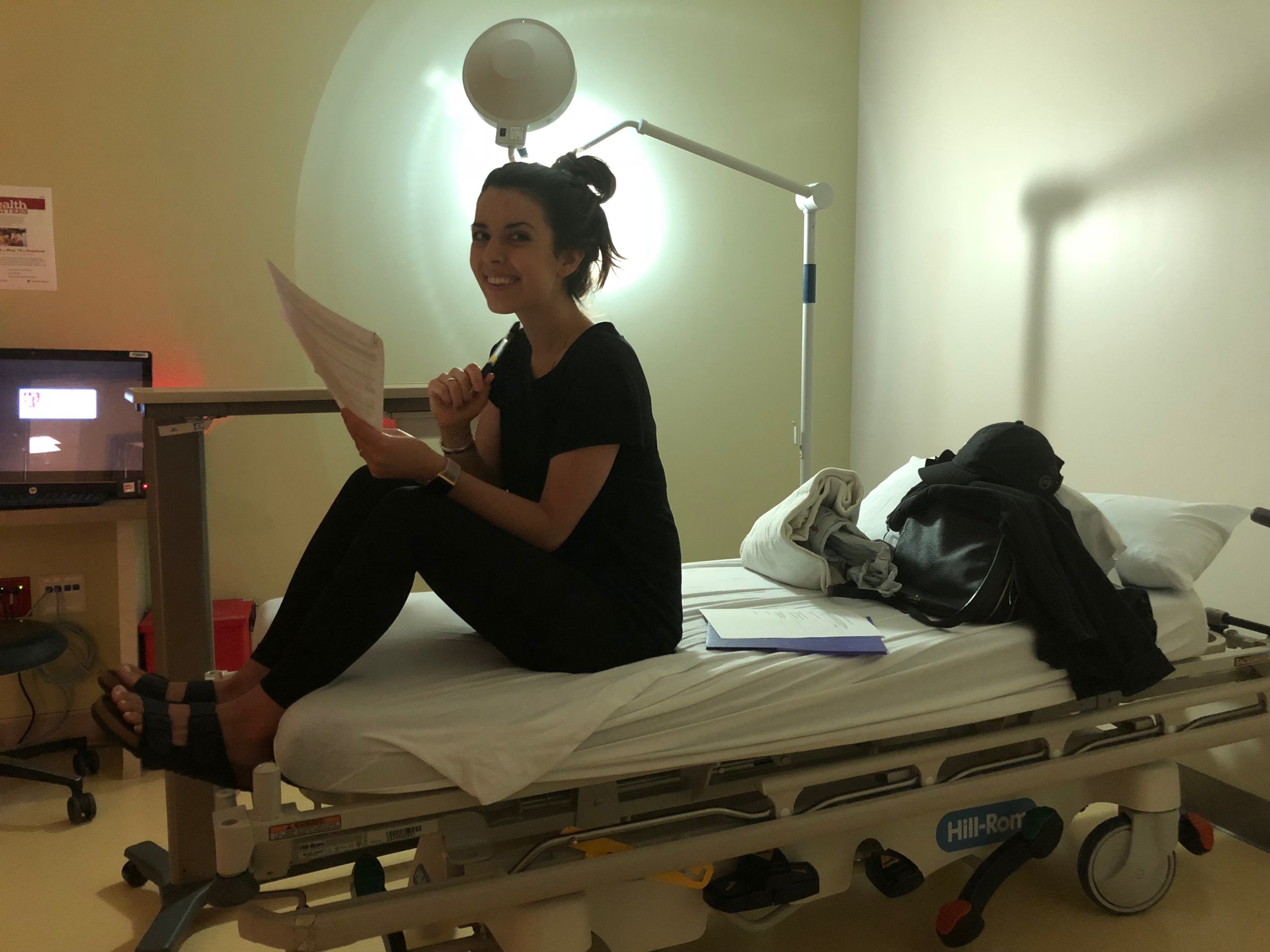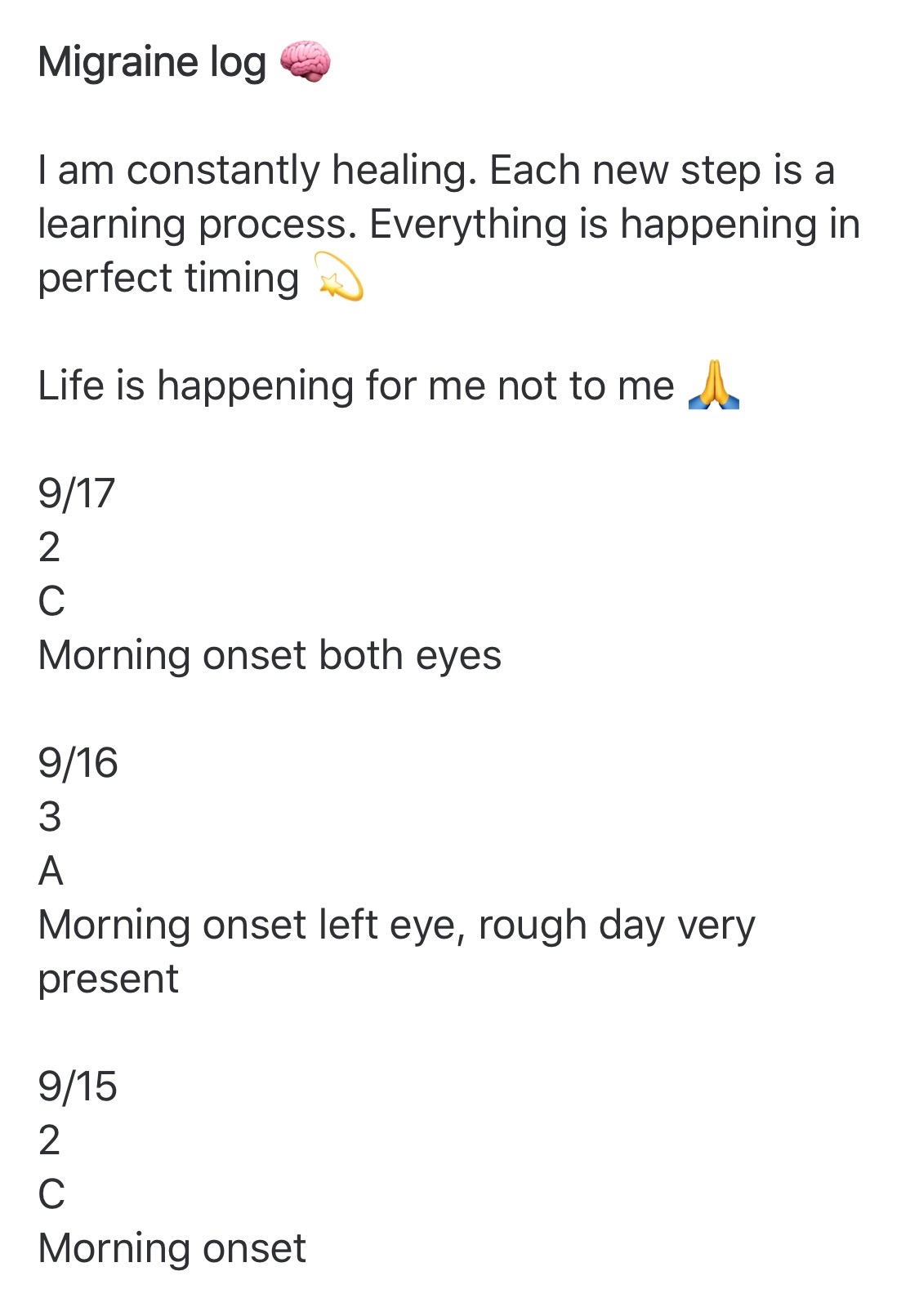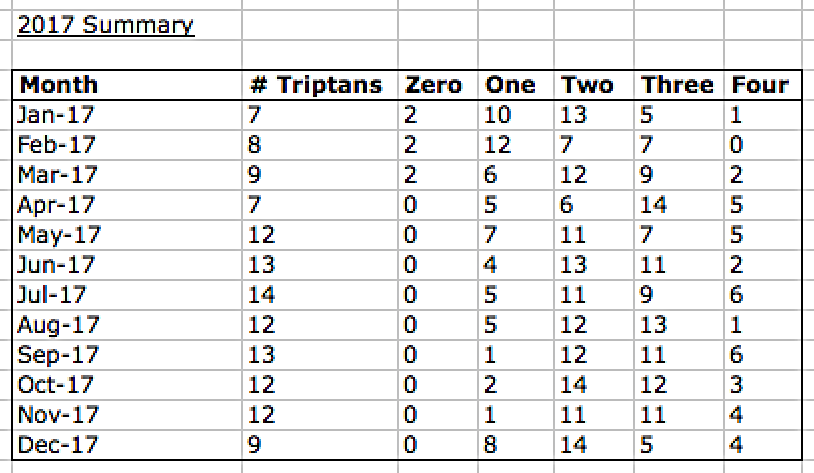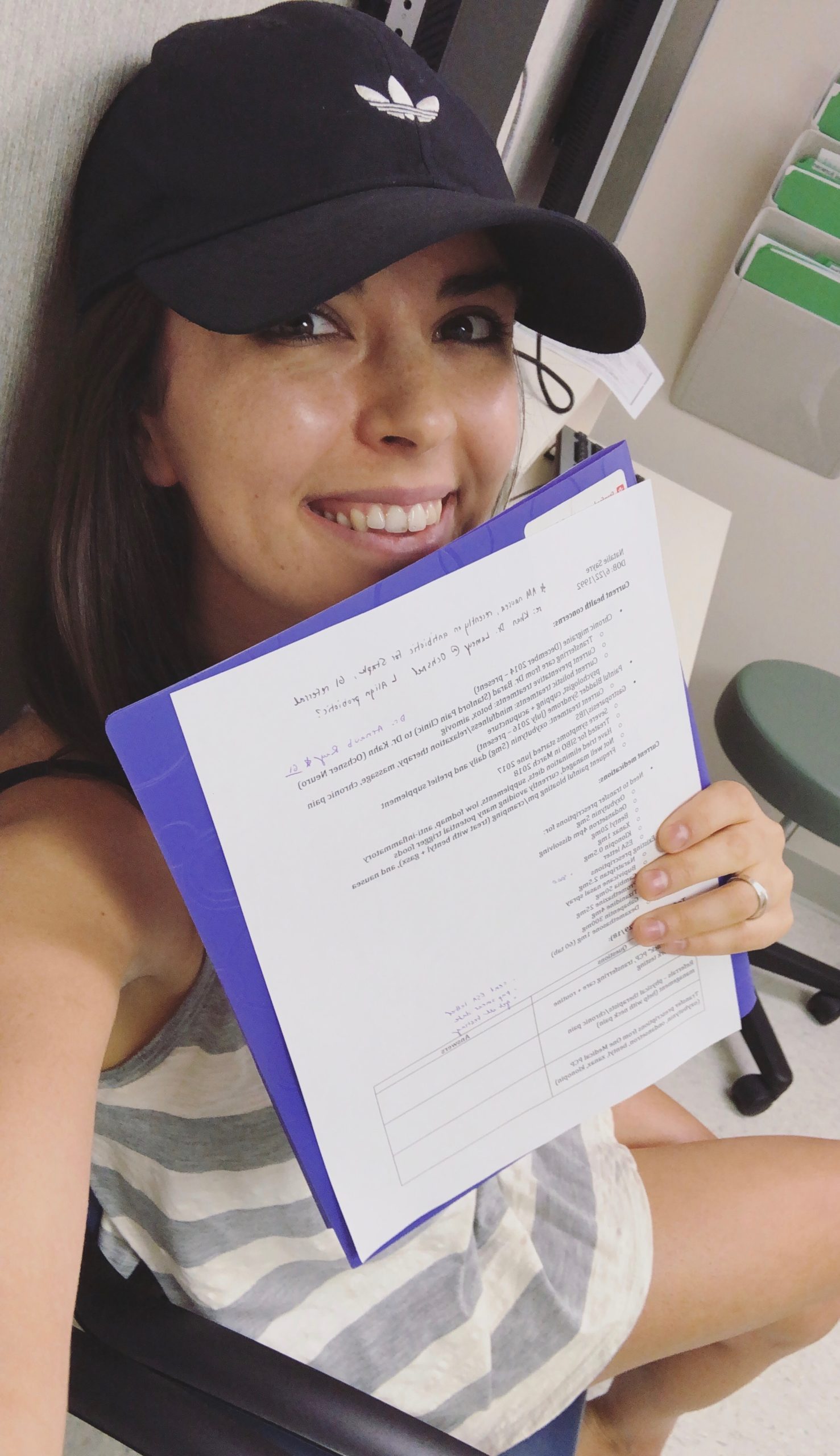How I Track and Log My Migraines
This has been a heavily requested post, and I’m so happy to finally be sharing it with you guys! I’ve been tracking my migraines with various apps, charts and tools since December 2014, and using the method I’m sharing today since January 2016.

Ingredients for a successful neurology appointment ➡️migraine log + appointment companion + informed patient
For me, what ultimately worked best was creating my own tracking system rather than using an app. My migraine attacks are fluid and long-lasting, often without a specific “start” and “stop” time. By creating my own way of tracking my pain, I was able to a) actually keep consistent track of my progress over several years’ time and b) follow trends without tracking my pain taking over my whole life.
I truly believe there is no “best” way to track your migraines. Just as each person’s presentation of migraine disease is different, the optimal tracking method varies based on this presentation and the personality of each patient. What I’m sharing today works really well for me. I urge you to take what you like from my technique and mold it so that it makes sense for you. Don’t be afraid to keep trying different templates and methods until you find something that seamlessly fits into your own lifestyle.
Main reasons I track my migraines:
-
Migraine pain is so encompassing that it can be challenging for me to objectively tell whether a certain month or period of time has shown improvement or decline. Often, my subjective analysis has more to do with how the past 48 hours have been rather than anything long term.
-
A migraine log is a reliable and objective way to track the progress of different preventative treatments over time.
-
Tracking my migraine pain is the most critical tool in my arsenal for clearly communicating with my doctors/neurologists and being the most proactive, informed patient I can be.
Okay. So…here is what you came for!
Migraine Tracking Phase 1️⃣:
I use a two step process to track my migraine pain. First, I record my daily pain level on a 0-4 scale. I used to follow the traditional 0-10 scale found in most doctors’ offices, but I was seriously stressing over where exactly I fell on such a large scale (a peek inside my brain: “am I at 6, a 6.5, or should I say 7?? no, it’s really more of a 6.75…” #perfectionistproblems). The 0-4 scale works much better for me, because it’s clearly defined “requirements” for each level of pain take the guesswork out of choosing a number for each day. I use the free Simplenote app to log these numbers because you can view notes on your phone, ipad and computer (which comes in handy for Phase 2 of my tracking…).
Pain Scale breakdown:
-
0: no pain, normal day (sadly very few and far between recently, but keeping it on there for when things improve!)
-
1: mild/light pain, noticeable but manageable, able to function without medication
-
2: moderate pain, interferes with daily activities, requires medication (first line acute rescue med)
-
3: significant pain, requires rest/dark/ice, limited activity, requires medication (second line acute rescue meds)
-
4: disabling, severe “9/10” level pain, requires rest/dark/ice and multiple rescue medications

Here is what a typical few days in my simplenote app might look like, I rotate different affirmations at the top of the note!
In addition to rating my pain daily, I record any medications I take. I have about 6 medications that I use to treat my pain on a regular basis. I created a medication key, and gave each of these a single letter representation for my recording purposes (M: maxalt, C: cambia, G: gabapentin, N: naproxen, A: amerge, etc…).
So, every day in simplenote, I rate my pain and record medications I’ve taken. I’d highly recommend getting in the habit of jotting down the medication right when you take it, or else at the end of the day (especially when pain kicks up) you can have one of those, “wtf did I even take today” moments, which are always frustrating and make me feel like I don’t have my life together.
Migraine Tracking Phase 2️⃣:
This step looks fancy, but really only requires about 30 min of work every few months. Phase 2 involves transferring daily data from the simplenote app, and merging it into a summarized excel document. My excel document has sheets for each monthly breakdown, important dates, and a summary page (you can download this template below!). I’ve tweaked this document over the years, and highly recommend you do the same to make sure it includes all of the factors that are relevant to your specific migraine situation.
Monthly Breakdown Sheet:

Example of one week recorded in my “monthly breakdown” excel sheet
-
I use the monthly breakdown to condense the day to day simplenote data that I gather.
-
I also record the days of my period, I’ve used the free “p tracker” app for years and love it.
-
Next I enter my daily pain score (severity of 0-4), any medications I have taken (using the one letter key) and any other notes I write in the daily log (sometimes I will note am/pm onset, side of the head, if it was extra severe, etc…).
-
Then, I look through my calendar and add anything significant in the “other” column (like travel, birthdays, weddings, anything out of the norm…). I will also add migraine related treatments (botox, nerve blocks, etc…) to the “migraine related info” column. My calendar is an invaluable tool for this step!
-
Finally, I use the “sort” feature on excel (google how to sort excel sheets if you don’t know how to do this, it is super easy) and sort by severity. I count up the number of days for each rating (0, 1, 2, 3, 4) and the total number of triptan days for the month. As I count these up, I record the data in the summary sheet.
Summary Sheet:

Example of a full year summary in my excel summary sheet
-
This is really the most important page for discussions between me and my doctor. For some appointments, this is the only sheet I print and bring with me (I always print two copies, one for me and one for my doctor).
-
On the summary page, I include significant dates from the current year (starting and stopping preventative meds, specific treatments like nerve blocks or botox, other medical procedures, etc…). At the beginning of each new year, I copy and paste that info onto the “important dates” sheet and begin a new current list for the summary sheet.
⭐️ Downloads:
-
Download MM Migraine Log Template (excel document with monthly template, significant dates, and summary page)
-
Download MM Migraine Log Example (one month from my personal log)

I hope that this was helpful for you guys. Please don’t hesitate to ask questions if anything was unclear. I truly believe that finding a system for tracking your pain is an integral part of a positive doctor-patient relationship and an important tool in managing complex migraine cases.
Happy tracking and happy healing!
September 17, 2018
Meet Natalie
I share each step along my road to wellness and healing and hope that in doing so I can inspire you along your own path. Thank you so much for being here.
Natalie,
What a generous gift!! I can’t thank you enough for taking the time to share your process and graciously sharing your own tracking system. I’ve seriously struggled with finding a system that works for me for me, and it’s so helpful to hear how your approach has evolved over time. I am definitely going to be using some of your tips and tricks Thank you, as always, for your generosity, transparency and heart. You’re such an inspiration — especially to us fellow twenty somethings!
Xx
Carolyn
This is SO fantastic. THANK YOU! I don’t like the Migraine Buddy app so much…especially when I have a migraine…it seems daunting haha. This is perfect!!!
Natalie,
Thanks so much for sharing this. It’s very helpful.
What do you mean by number if triptan days in your summary?
I’m familiar with eletriptan, the medication. Is this the number of days you need to take this type of medication?
Thank you.
Thanks!